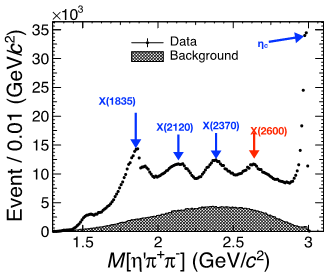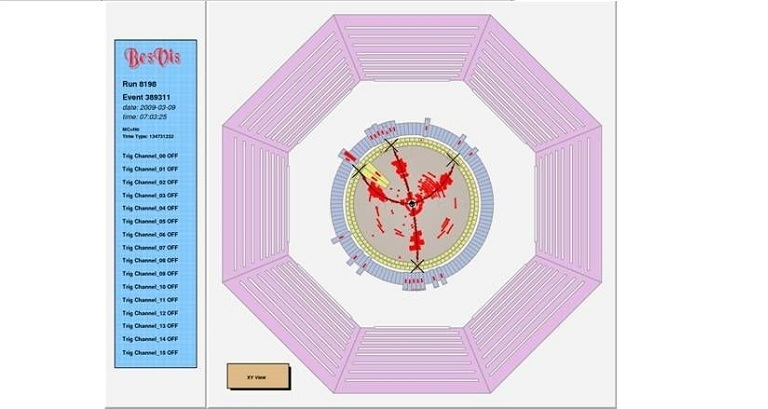Observation of the X(2600) State
The X(2600) state was observed in the process J/ψ→γπ+ π- η' with a statistical significance 20 times larger than the standard deviation. In addition, the production rate for the two main decay modes from X(2600), i.e., f0(1500) η'and X(1540) η', were measured. This observation is a key measurement in addition to the other measurements performed on new hadronic state searches. Having established such a measurement, it is very important to understand the essential properties of X(2600) through further investigations such as searching for X(2600) in other final states and determining the corresponding spin-parity, etc.
According to the quark model, all hadrons consist of two or three quarks. However, quantum chromodynamics (QCD) allows the existence of multiquarks, hybrid states, and glueballs. For that reason, observations of new hadronic states are important for testing and developing the QCD and hadron phenomenology models. Such testing and development are key goals of high-energy physics experiments. In the past few years, lattice QCD (LQCD) has gone through many developments and registered important achievements. It provides important theoretical predictions for spectroscopy and new hadron searches, and predicts the ground state of the pseudo-scalar glueball to have a mass around 2.3~2.6 GeV/c2.
A series of new particles were observed in the π+ π- η' mass spectrum via J/ψ radiative decay, including X(1835), X(2120), X(2370), and X(2600). These experimental results provide a research portal for better understanding new hadron spectroscopy.

Contact Information
Mr. GUO Lijun
ljguo@ihep.ac.cn

